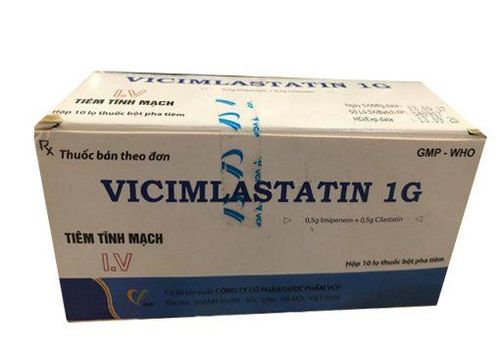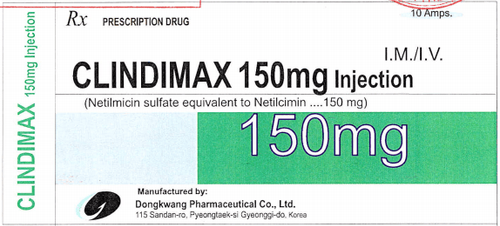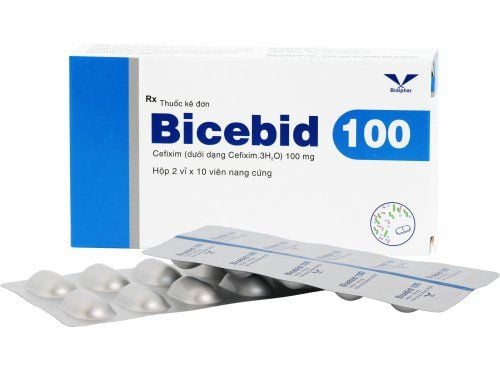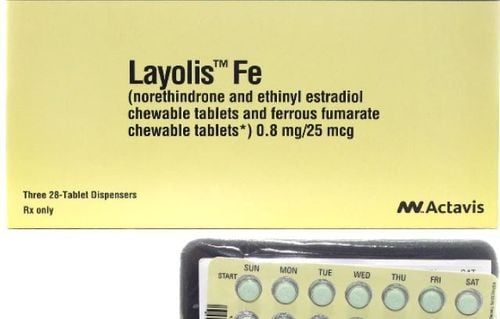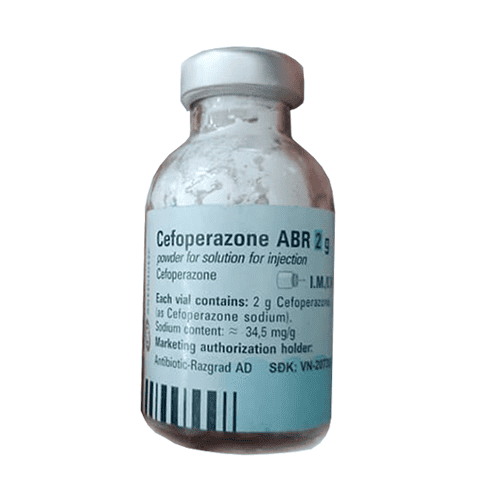This is an automatically translated article.
Vifamox 250 is prescribed by doctors for use in cases of respiratory tract infections, urinary tract infections, gonorrhea, biliary tract diseases, skin and muscle diseases. Vifamox 250 is used for many subjects both adults and children.1. What are the effects of Vifamox 250?
1.1. What is Vifamox 250? Vifamox 250 belongs to the group of anti-parasitic, anti-infective and anti-viral, anti-fungal drugs. Drugs with registration number VD-0101-06 (with capsule form), VD-4369-07 (with powder form for suspension), VD-30564-18 (with orange-green hard capsule form), issued by Joint Stock Company Pharmaceutical part TW Vidipha - Vietnam produced.
Vifamox 250 includes the following ingredients:
Main active ingredient: Amoxicillin 250mg (As amoxicillin trihydrate). Excipients: Lactose, talcum powder, aerosil, aspartame, fruit flavor powder and vanillin. Vifamox 250 is prepared in the form of capsules, hard capsules or powder for oral suspension with a strength of 250mg. The drug is recommended for both adults and children.
1.2. What diseases does Vifamox 250 treat? Amoxicillin is actually an aminopenicillin, which is active against most Gram-positive and Gram-negative bacteria such as: Streptococcus, H. influenzae, Diplococcus pneumoniae, E. coli, N. gonorrhoeae, non-penicillinase-producing staphylococci and Proteus mirabilis. Like ampicillin, amoxicillin is inactive against penicillinase-producing bacteria, especially methicillin-resistant staphylococci, most strains of Klebsiella, and all strains of Pseudomonas and Enterobacter.
Vifamox 250 is prescribed by doctors for the following cases:
Lower respiratory tract infections caused by streptococci, pneumococci, non-penicillinase-producing staphylococci and H. influenza. Upper respiratory tract infections (including nose-ear-throat infections) Uncomplicated urinary tract infections. Gonorrhea . Bile duct infection. Skin and muscle infections caused by staphylococcus E.coli, streptococcus sensitive to amoxicillin. Vifamox 250 is contraindicated in the following cases:
Patients are allergic to the main active ingredient Amoxicillin, penicillin group antibiotics or any of the excipients of the drug.
2. Usage of Vifamox 250
2.1. How to take Vifamox 250 Vifamox 250 is taken orally. Powder for suspension: Patients need to mix Vifamox 250 sachets with about 50ml of water, wait until the drug is completely dissolved, then start drinking. Tablet form: If Vifamox 250 tablets are too big, they can be easily broken in half but do not crush or mix with any other solution or mixture. Take Vifamox 250 as directed by your doctor. 2.2. Dosage of Vifamox 250 Usual dose with treatment time from 7 to 10 days:
Adults: 250 - 500mg, every 8 hours orally. Children: Up to 10 years old can take a dose of 125 - 250mg, every 8 hours. Children under 20kg usually take a dose of 20-40 mg/kg body weight/day. Dose of 3g, repeated after 8 hours for treatment of periodontal abscess, or repeated after 10-12 hours for the treatment of acute urinary tract infections uncomplicated.
To prevent endocarditis in susceptible individuals, give a single dose of 3g 1 hour before procedures such as tooth extraction.
Use a high-dose regimen of 3 g x 2 times/day for patients with severe or recurrent respiratory infections.
If necessary, children 3 - 10 years old with otitis media can be given 750mg x 2 times / day for 2 days.
For patients with renal failure, the dose must be reduced according to the creatinine clearance:
Cl creatinine > 10 ml/min: 500 mg/ 12 hours. Cl creatinine < 10ml/min: 250mg - 500mg every 24 hours. Hemodialysis patients: 250mg – 500mg every 24 hours and 1 additional dose during dialysis and after the dialysis session.
Handling when missed dose:
If you forget to take a dose of Vifamox 250 but not more than 12 hours later than the time to take it: The patient takes 1 tablet immediately and then takes the next one at the scheduled time to take the medicine. . If 1 dose is missed, more than 12 hours: Skip the missed dose and take the next dose. Do not take a double dose to make up for missed doses. Treatment of Overdose:
Cases of overdose with Vifamox 250 are usually asymptomatic. Rarely, including: Psychiatric, renal and gastrointestinal. Electrolyte/water imbalances should be treated symptomatically. During administration of high doses of amoxicillin, adequate fluid intake and urinary excretion should be maintained to minimize the possibility of amoxicillin crystalluria.
3. Note when using Vifamox 250
Must periodically check blood tests to check liver and kidney functions during long-term Vifamox 250 treatment. Serious hypersensitivity reactions can occur in patients with a history of allergy to penicillins or other allergens, and the patient's history of allergy to penicillins or cephalosporins and other allergens should be carefully investigated. other source. If allergic reactions such as Quincke's edema, anaphylaxis, erythema, Stevens-Johnson syndrome occur, Vifamox 250 should be discontinued and immediate emergency treatment given with adrenaline, oxygen in the eye, and injectable corticosteroid therapy. IV and secure ventilation, including intubation, and the patient should never be treated with penicillins or cephalosporins again. Because amoxicillin is excreted in human milk, caution must be exercised when Vifamox 250 is used during lactation. The safe use of Vifamox 250 during pregnancy has not been established. Therefore, use this medicine only when clearly needed during pregnancy.
4. Side effects of Vifamox 250
At therapeutic doses, Vifamox 250 is well tolerated. However, during the use of Vifamox 250, patients may still experience side effects such as:
Common: The rash usually appears slowly after 7 days of treatment. Uncommon: Nausea, vomiting, diarrhea, erythema, maculopapular rash and urticaria, especially Stevens-Johnson syndrome. Rare: Slight increase in SGOT, agitation, irritability, anxiety, insomnia, confusion, behavioral changes, dizziness, anemia, thrombocytopenia, thrombocytopenic purpura, eosinophilia, leukopenia and agranulocytosis. If you experience these symptoms, the patient should stop using Vifamox 250 and notify the doctor for appropriate treatment.
5. Vifamox 250 drug interactions
Amoxicillin absorption is not affected by food in the stomach, so it can be taken before or after meals. Nifedipine increases the absorption of amoxicillin. There may be antagonism between the biocide amoxicillin and bacteriostatic agents such as chloramphenicol and tetracycline. Probenecid reduces renal tubular secretion of amoxicillin. Concomitant use of this medicine with Vifamox 250 may increase and prolong blood levels of amoxicillin. When allopurinol is taken with Vifamox 250, there is an increased likelihood of amoxicillin rash. To avoid interactions, before being prescribed Vifamox 250, the patient should inform the doctor about the drugs they are using, including functional foods. The doctor will base on that to prescribe the appropriate Vifamox 250.
6. How to store Vifamox 250
The shelf life of Vifamox 250 is 36 months from the date of manufacture. Store amoxicillin capsules, tablets and powder for oral suspension in sealed vials, at a temperature of 15 - 30 degrees Celsius. Amoxicillin oral suspension should be stored after being mixed in the refrigerator (2 - 8 degrees Celsius), the mixture should be stored. This solution can be stable for 14 days at room temperature or at 2 - 8 degrees Celsius. Keep Vifamox 250 out of the reach of children. Above is all information about Vifamox 250, patients need to carefully read the instructions for use, consult a doctor / pharmacist before using. Absolutely do not arbitrarily buy Vifamox 250 for home treatment because there may be unwanted side effects.
Please dial HOTLINE for more information or register for an appointment HERE. Download MyVinmec app to make appointments faster and to manage your bookings easily.




